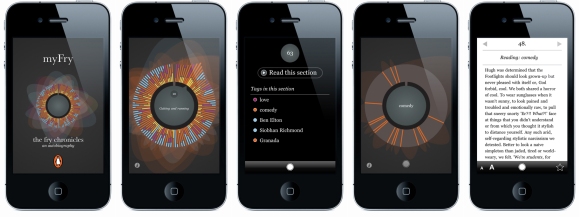Because of my frequently changing ideas and project development, a lot of my relevant information is scattered throughout this blog. So here is a more cohesive summary of what I intend to do, with further details in each linked blog post.
Synopsis:
This will be an interactive website/iPad App which is essentially bringing new life to Ethel C. Pedley’s children’s novel “Dot and the Kangaroo”, originally published in 1899. Taking the form of a cross between an eBook and digital archive, I will create a prototype version of what I’ve been calling an ‘augmented eBook’ – giving users a traditional book experience with extra educational resources, interactive information and historical and environmental material.
Research information available here: On eBooks, audiences, pirates and kangaroos
Purpose:
The online doco has two main purposes: firstly, to re-introduce an old book and history to new audiences. The 1900s and 1910s were a fascinating time in our country’s past, but is not well known or accessible to today’s society. By digitising and renewing this accessibility, the site will hopefully pique new interest in the area and potentially inspire dialogue with the elderly, addressing the digital generational divide.
The second purpose of the site is to draw attention to Australia’s conservation issues and environmental causes, as per Pedley’s dedication to ‘the children of Australia’. The site will aim to highlight the current problems and encourage environmental activism.
Research information available here: Old books – the new adventure
More research about purpose here: Old books: further development
Intended Audience:
The primary are Australians and those interested in Australian history. I’ve decided not to focus on children, because I want to be able to make it accessible for adults who may be interested in literature, Australia, history, wildlife and conservation issues. Its medium should appeal to the tech-savvy but I’d like it to be accessible for older audiences, wanting to reconnect with the old days. Although intended for children, the book is simply and artistically written so that ‘grown-ups’ can still enjoy it – and sometimes, looking back on things from childhood, people go ‘oh, now I understand’ – and this is what I hope to achieve. The website should still be able to be accessed by younger audiences if they are interested, as well as non-Australians – the key environmental messages really are applicable to the plight of animals throughout the world.
Content:
There will be three areas of content: the eBook itself, a section about childhood in the early Australian era and a section about modern day conservation issues.
Research information available here: Dot and the Kangaroo: The book, the era, the issues
Design:
Navigation of the content will be via the book and a desk interface, with items which can be scrolled-over and clicked on for other pages of information. There will be some items ‘tucked in’ the pages of the book, to be discovered at the reader’s pace. Interactions will be small but engaging with the content. The style will have a natural aesthetic, including images of found items and articles, and designed with a soft bush colour palette. The sound design will be minimal but relevant to the narrative and issues raised.
More research information available here: Dot and the Kangaroo: Design aspects
Images of the Dot and the Kangaroo book available here: Old books: further development
Feasibility:
My content is using material from the public domain and citable sources, so that is also feasible. The potential scope is quite wide, however, so for the sake of this assignment, I will limit it to the first two chapters (with the intent of doing more), and four sections about the early Australian context, and four sections about modern conservation issues and endangered species. The construction of the site would be in Adobe InDesign 5.5 and Flash, with embedding in WordPress. Technical specifications would be investigated for converting to an iPad App format. User generated content will be considered, but at this stage it would only make the project more challenging.
























